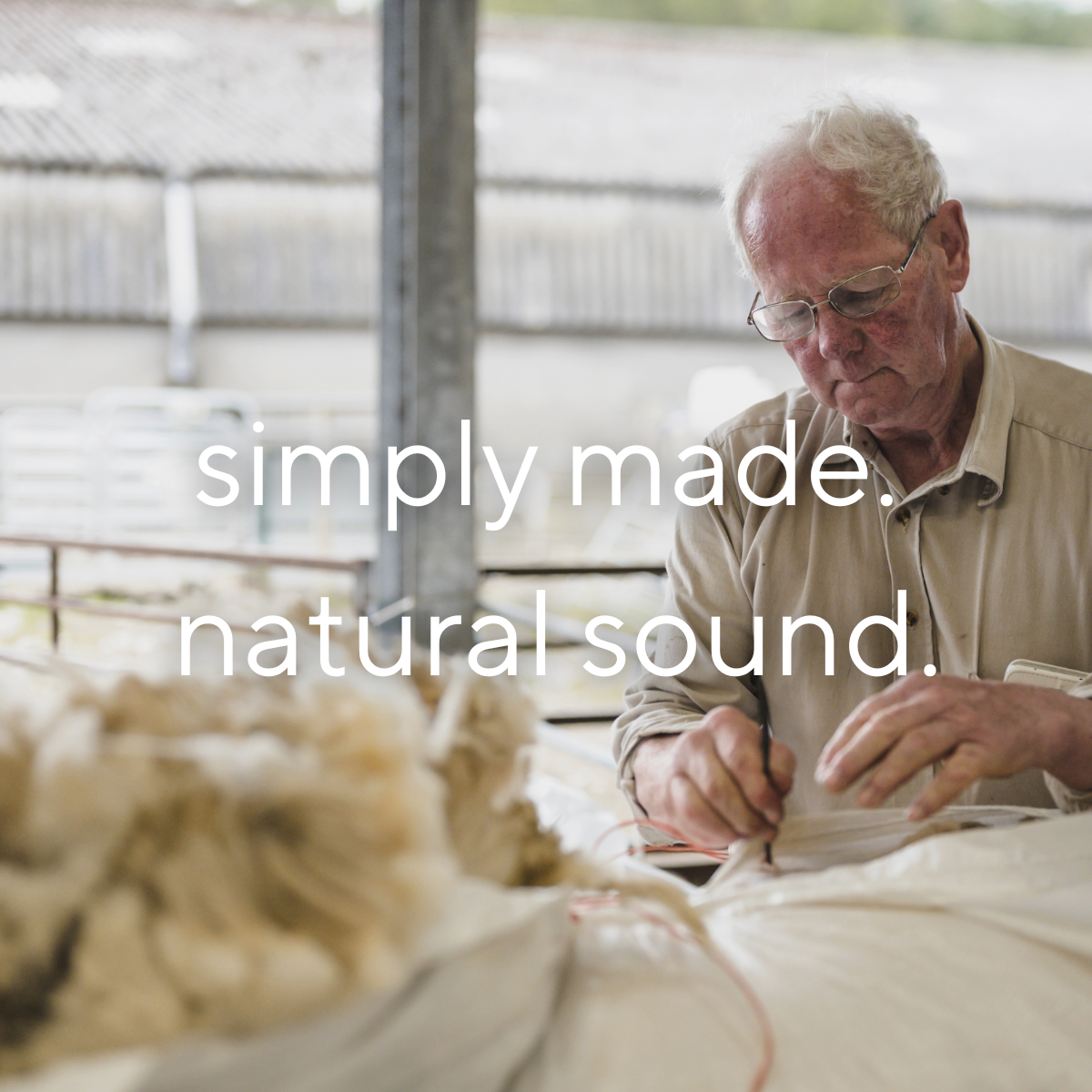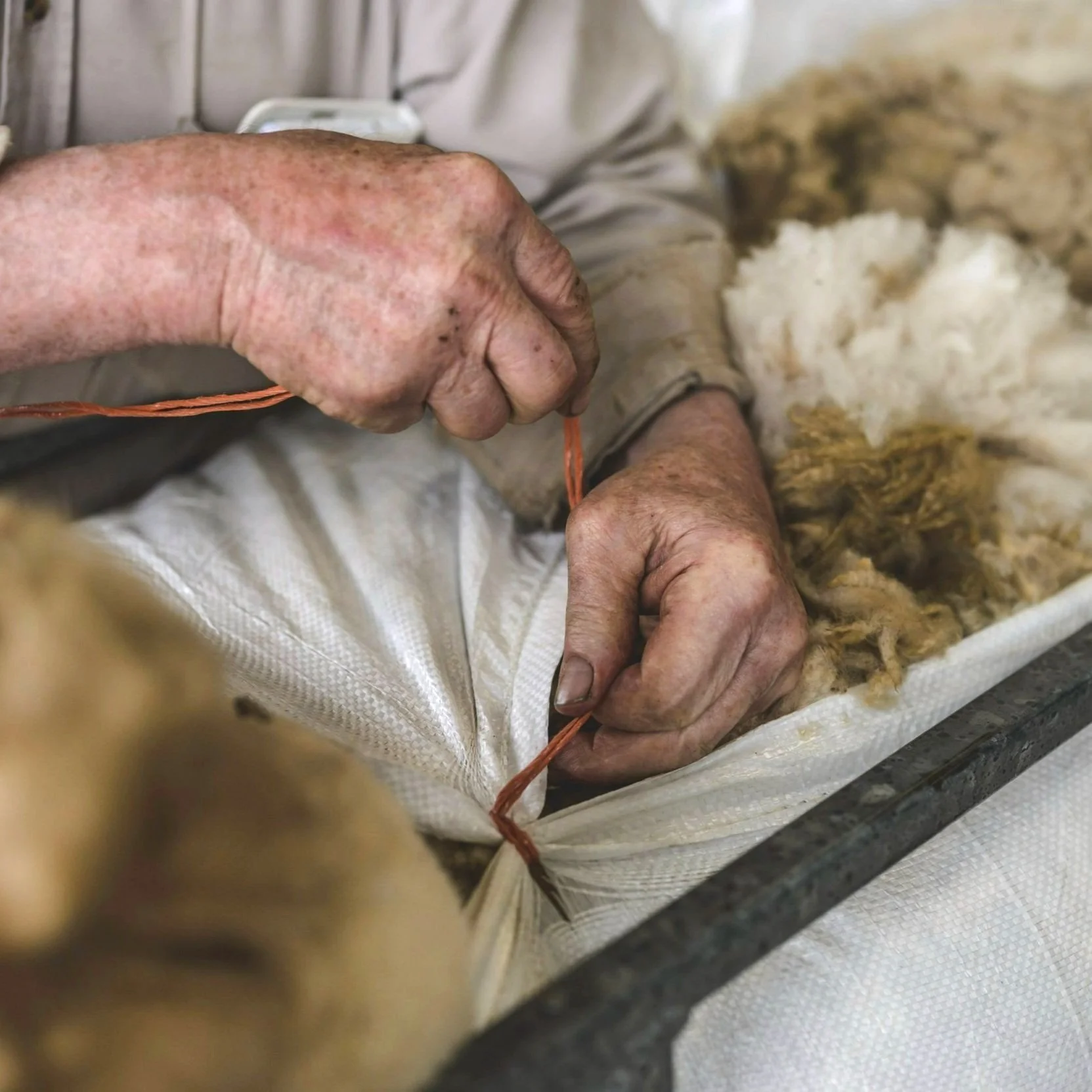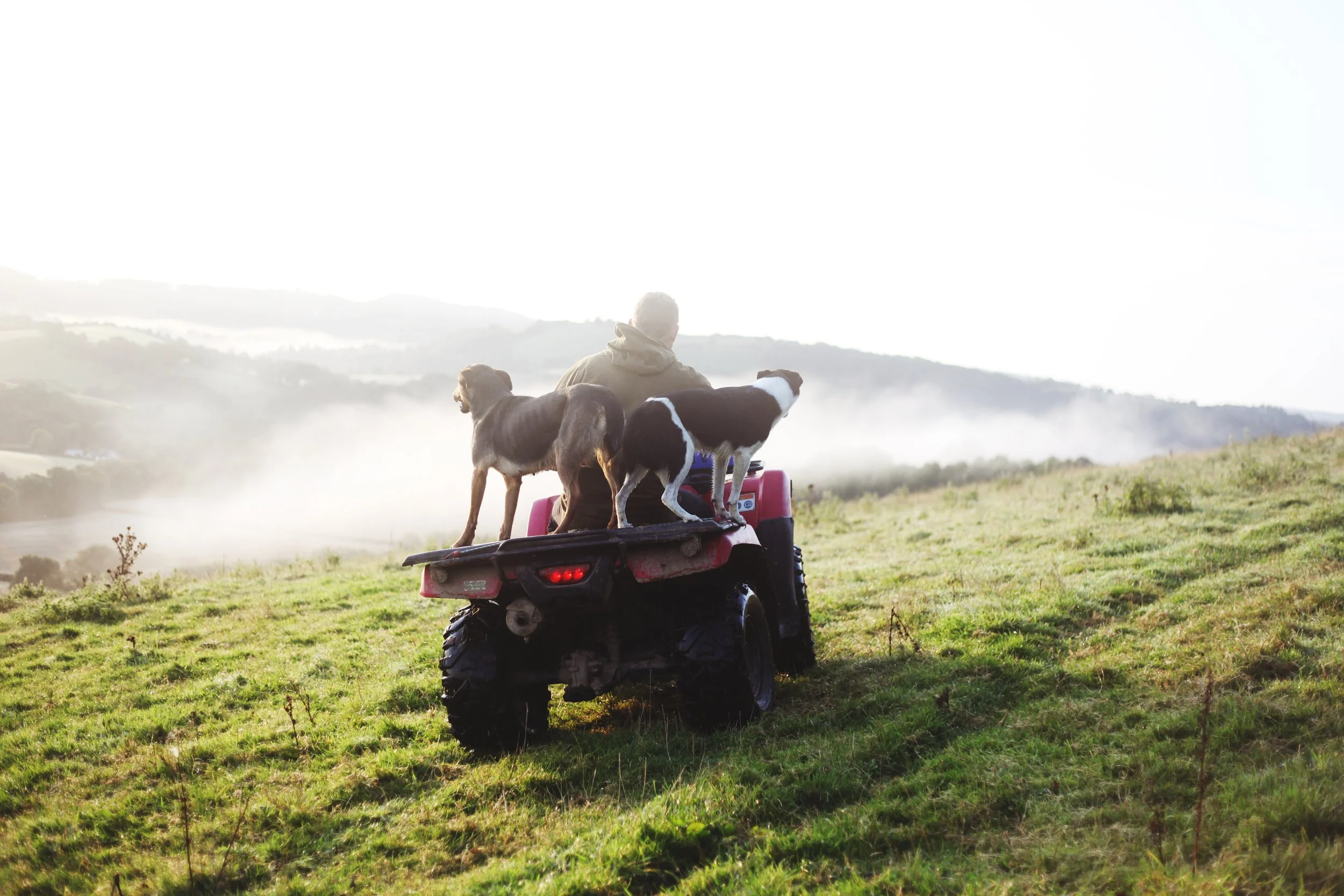acou.wool™
acoustic range by acou.space
acoustic range by acou.space

acou.space are a Yorkshire family-run business with over 30 years of industry experience.
we specialise in designing and supplying innovative acoustic finishes using a wide variety of acoustic materials, creating unique products for the design community.
our background in textiles and design has naturally led us to explore wool as an acoustic material. It's a fibre full of character.

Six years after founding of acou.space we’ve found that, 'Ahha!' moment. We are now privileged to be working with expert manufacturers and suppliers to produce unique acoustic finishes using traceable wool from Yorkshire - historically the heart of the global wool industry. It is a delight to build on inherent knowledge of the region and promote this natural wonder fibre.
it’s a privilege to celebrate yorkshire’s rich textile and design heritage through our range of 100% British and regenerative new zealand wool acoustic products. on this journey, we’re working closely with local, ethical suppliers based in yorkshire, where we too are based.


As acoustic designers, we cherish the opportunity to innovatively create beautiful finishes suitable for commercial situations to reduce unwanted reverberation. Interiors which enhance the life quality of those who use the spaces.
we value the importance of meaningful relationships—between individuals, and with the world around us of which we are a part. to this end, our honest interest combines with genuine commitment to biophilic, design-led products.

As awareness of biophilic design grows, it's clear that echoing the natural world indoors contributes to well-being—especially as we spend nearly 90% of our time inside. We enjoy and agree with the inherent meaning of biophilia which is 'love of life'. Indeed, this is our purpose to enhance love and enjoyment of life within the spaces where we spend the majority of our time.
acou.space is an acoustic design house dedicated to delivering exceptional sound-enhancing solutions.
welcome to ‘our house’!

By partnering with Woolkeepers™ to ensure british sheep farmers are given a fair price for their wool. acou.wool™ products are manufactured utilising responsibly sourced and fully traceable wool, working with farmers in both the UK and New Zealand.
wool is renewable - every year!
British wool is generally of a courser texture, has a defined natural colour and of a more crimped texture.
New Zealand wool tends to have a finer and longer staple, is paler in colour with less crimp to the fibre.
Both qualities are excellent and useful for different aspects within the product design of sound absorbing finishes.
all is acou.wool™ utilised by acou.space™
is traceble.



Sourced mainly from Scotland and Wales, the wool is processed from it’s greasy state in Yorkshire and manufactured into various wool textiles for the domestic and commercial markets.

Wool’s inherent fire resistance comes from its naturally high nitrogen and water content. Because of this, wool requires higher levels of oxygen in the surrounding environment in order to burn. Wool may be ignited if subjected to a significantly powerful heat source, but it does not support the flame. If smouldering occurs, it usually continues only for a short time. In addition, wool’s highly cross-linked cell membrane structure will swell when heated to the point of combustion, forming an insulating layer that prevents the spread of the flames.
Wool is difficult to ignite (570-600°C) compared to cotton (255°C) or polyester (485-560°C), it does not melt, unlike polyester and nylon, which melt at 252-292°C and 160-260°C respectively. Wool has a low heat combustion level, meaning the amount of heat released in burning Wool does not produce toxic fumes when exposed to high temperatures¹
Our products have been tested for spread of flame to interior furnishing standards.

Wool is made of keratin, the same protein as human hair. Wool grows naturally on sheep just like our hair grows. Through biodegradation, micro-organisms in soil or water break down matter and consume it. These micro-organisms break down during their life cycle. This is how biological life cycles from one to the next. ²
Tests show that with the ideal conditions, wool products are almost completely degraded after six months in the ground.³

acou.wool™ acoustic finishes are made from natural wool fibers. Research is currently being done on using wool carpets in indoor areas.
Research by AgResearch scientists has revealed that wool carpets significantly improve indoor air quality by rapidly absorbing the common pollutants formaldehyde, sulphur dioxide and nitrogen oxides. Not only does wool neutralise these contaminants more quickly and completely than synthetic carpet fibres, wool does not re-emit them, even when heated. Wool carpet may continue purifying the air for up to 30 years. ⁴
It is suggested that due to the amount of time commonly spent indoors (up to 90%)⁵ air quality is an important aspect of well being with air conditioning possibly trapping pollutants inside.

Wool absorbs and locks way odours. The wool fibre actively binds odours within the fibre where bacteria do not thrive.⁶

To maintain soil health / fertility environmental outcomes are at the forefront of decision-making. grazing sheep are timed and rotated to allow pasture land to recover, supporting plant diversity, and prevents overgrasing. Approximately a third of the Earth’s land surface is grasslands, and 70% of these lands have been degraded. by Restoring productivity back to the land for food and water, the degradation of these grasslands is reversable.

healthy grasslands absorb and store CO2 from the atmosphere.

healthy vegetation improves watershed mainly through its influence on water quality, soil stability and ecosystem balance.

regenerative farming purposefully encourages biodiversity by the planting of hedgerows, wild flower borders, the tree maintenance, so increasing wildlife variety /numbers, reducing pests whilst also reducing reliance on pesticides.
flourishing grasslands is one of the first steps to healthy sheep and prospering livestock production, including sustainable and quality wool production.
¹ British Wool Fact Sheets – Wool & Fire britishwool.org.uk.
² International Wool Textiles Association. Dr Paul Swan ‘Wool is Biodegradable’
³ 1 Brown, R. The Microbial Degradation of Wool in the Marine Environment. University of Canterbury, 1994 - https://ir.canterbury.ac.nz/handle/10092/16802
⁴ McNeil, Steve. (2015). The Removal of Indoor Air Contaminants by Wool Textiles. 10.13140/RG.2.2.25887.07847. Indoor air pollutants can lead to discomfort, reduced productivity of employees nd even ill health.
⁵ https://ukhsa.blog.gov.uk/2015/11/26/home-is-where-the-climate-risks-could-be
⁶ https://www.woolmark.com/industry/research/wool-odour-resistant/